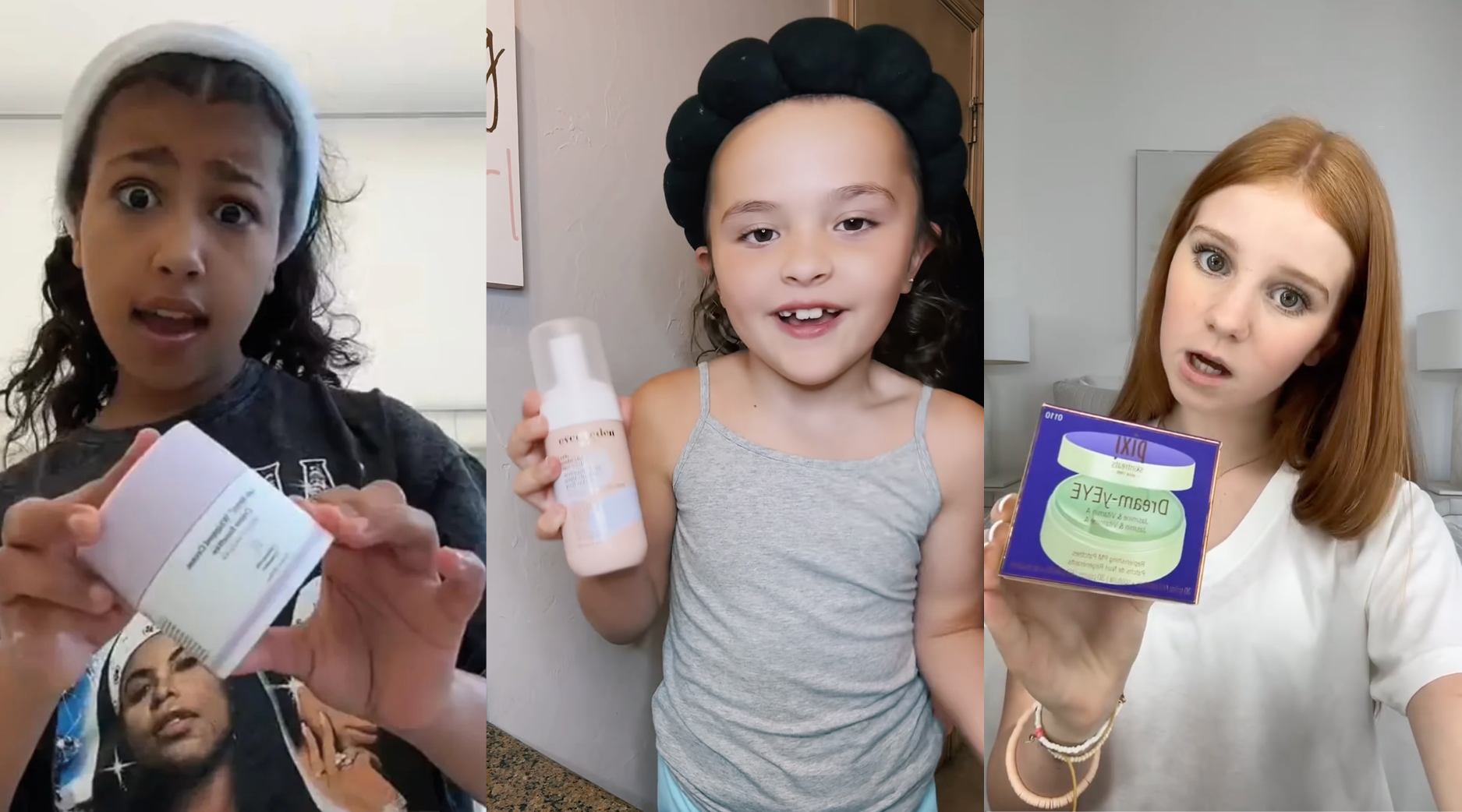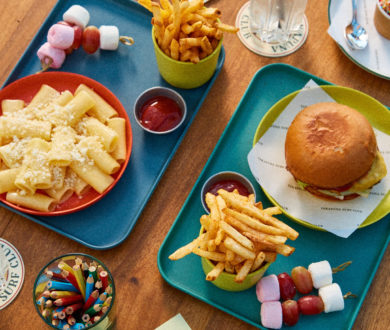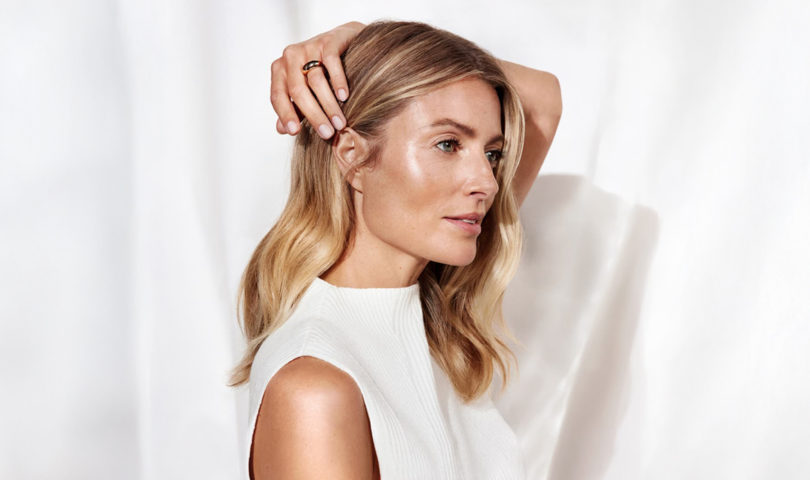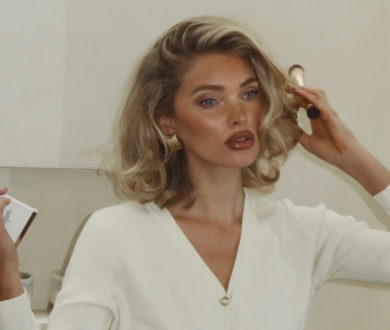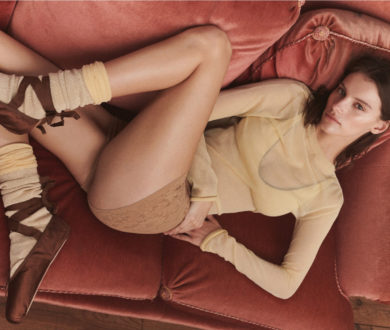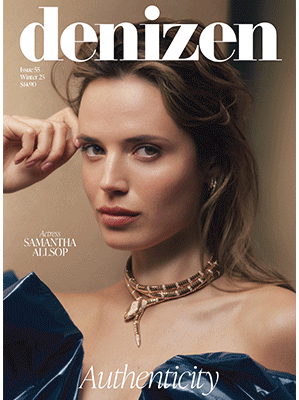It seems that everywhere I turn at the moment, I’m being reminded of the fact that kids are growing up too fast. Since becoming a mother, my awareness of just how much childhood has changed has kicked into overdrive, and honestly I’m shocked, saddened, and a little horrified at how swiftly these pivotal years have been hijacked by cyberculture. When did kids stop dancing around living rooms in their mum’s high heels performing for their parents with hairbrushes as microphones, and start donning mom jeans and crop tops, filming dance routines for their TikTok fanbase? And, speaking of TikTok, and routines, when did kids start filming their morning routines? When did kids start having morning routines?
Driving to work today, a billboard caught my attention at a set of traffic lights. It was for a major beauty brand, and the advert very much looked to be targeting children. It was all bright colours and poppy text, boasting skincare ‘from $10’, and the models — one male, one female, looked far too young to need said skincare. It reminded me of an article I read recently that reported on the fact that Gen Alpha is driving 49 percent of drugstore skincare sales in America. Gen Alpha, for those unaware, encompasses those born between 2010 and 2023 — spanning just over a decade. A pretty small cohort to be responsible for such a substantial fraction.
Girls as young as eight are part of a new crop of skincare obsessives turning beauty retailers upside down to seek out whatever North West has been plugging on TikTok the week prior. But, to what end? To maintain a youthful visage? To get one step closer to becoming an ‘influencer’? Or simply, to fit in? I felt like I needed answers — and what I discovered was both heartbreaking and terrifying, calling into question this youngest generation’s relationship with not only the beauty industry, but themselves.
Recently, workers at Sephora began recounting tales of children visiting the store, destroying samples and hurling abuse at staff while demanding skincare products by Drunk Elephant, Glow Recipe, and Sol De Janeiro. At initial glance, you’d assume their frenzied shopping trips were simply the result of the lure of these cult brands’ pretty pastel and neon bottles — so childlike is their appeal, but as it happens, their motives are more than packaging, or skin, deep. It seems that the want for these cutesy-looking products, largely fuelled by the commodification of beauty hitting this youngest generation the hardest (a byproduct of their ultra-online world), has become a need. And one that is only being capitalised on, not quelled, by the beauty industry.
While there is plenty wrong with this picture, the most immediate problem is the fact that the products these kids are using have been developed with adults’ skin in mind. Kids’ skin is very different in that, like everything else in adolescence, it’s not yet fully developed. It’s thinner, it’s much more sensitive, and their skin barriers aren’t equipped to handle harsh, active ingredients. Exposure to the likes of retinol, vitamin C, and glycolic acid can (and will) do long-term damage — not only impacting skin’s overall health but causing lifelong sensitivities, allergies, or worse. Not only this, but some of these cult products contain hormone disruptors, and it doesn’t take a genius to recognise that the last thing pubescent tweens need is something throwing their hormones off balance. When reporting on the issue, Cosmetics Business aptly said, “Gen Alpha is the skin care industry’s newest opportunity, and its biggest responsibility”. Not only are tweens far less inclined to be aware of the impact these products will have on their skin long-term, but, given their age and stage, they are incredibly vulnerable to the influence of marketing. It’s our duty — and the duty of the beauty industry as a whole, to acknowledge this and find a solution.
A tween’s inclination to beautify themselves is nothing new. When I was in my pre-teen era, I was also fixated on beauty products, but my poison was more Impulse body spray, hair mascara, Lip Smackers, and, if I could conduct a stealth assault on mum’s beauty cabinet, a spritz of Sun In hair lightener. But Gen A is a different beast entirely. Growing up in an age of hyper-engagement with social media, this group is favouring the viral beauty products that those they follow (and idolise) are plugging. The likes of Hailey Bieber and Kendall Jenner, who have amassed social followings of 53 million and 292 million respectively, can sell out products in seconds — their audiences hanging off their every carefully curated, often ghostwritten, and more often than not, paid-for word.
Once I started thinking about this, I couldn’t stop, and it seemed I wasn’t the only one. I had a discussion with a friend whose nine-year-old daughter had just handed over her birthday wishlist, which consisted exclusively of cult-label skincare. When asked where she found out about all of these products, she laughed and shook her head in shame for her mother’s ignorance. Social media. Obviously. The same child then specified that she didn’t want a birthday party this year, and insisted the party money be spent on the wishlist contents (as the cost of these products far eclipses the anticipated dolls and books of yesteryear). And the madness continues. A friend recently called me outraged after catching her eight-year-old daughter retinol-handed stealing her Drunk Elephant serum, which contains myriad active ingredients to combat the signs of ageing. When confronted, she simply quipped, “Mum, I need it.” The internet is filled with anecdotes such as this, and all you need to do is whisper the word ‘skincare’ around a parent to get a picture of the scale of this issue.
Undeniably a result of Gen A’s obsession with online culture, the desire to be up-to-date with the latest and greatest in the beauty world isn’t surprising. Beyond an inclination to make like mum and doll themselves up, this is more specific — their goal is to reach an impossible standard of beauty, perpetuated by the influencers and celebrities they worship. While many parents believe that their child’s desire to use their Drunk Elephant is down to “the pretty packaging” — the real reason is that they’ve seen influencers discussing it’s skin-smoothing, glow-inducing properties; and have become hell-bent on achieving the donut gloss skin social media tells them they need in order to be something in the world. It’s insane. It’s toxic. But it’s also the reality. And it goes well beyond image alone.
This obsession is not only damaging kids’ young skin but, perhaps even more concerning it’s fuelling the anti-aging and beauty standard rhetoric that dominates the online sphere. I was shocked to recently learn the age at which some young girls are starting Botox, and even more shocked to learn of the staggering numbers of eating disorders and mental health issues related to body image in New Zealand. Now, throw in the pressure to douse yourself in $200 serums every day and you’ve got yourself one big fucking problem.
Given the age we live in, it’s inevitable that young girls will want a skincare routine. It’s what they see everywhere, everyday. Our role isn’t to simply say no (we all know how adept kids are at finding workarounds), but instead, make sure that the reason behind the routine is more ‘healthy skin’ and less ‘harmful beauty ideals’, and that the products they’re using are age-appropriate.

